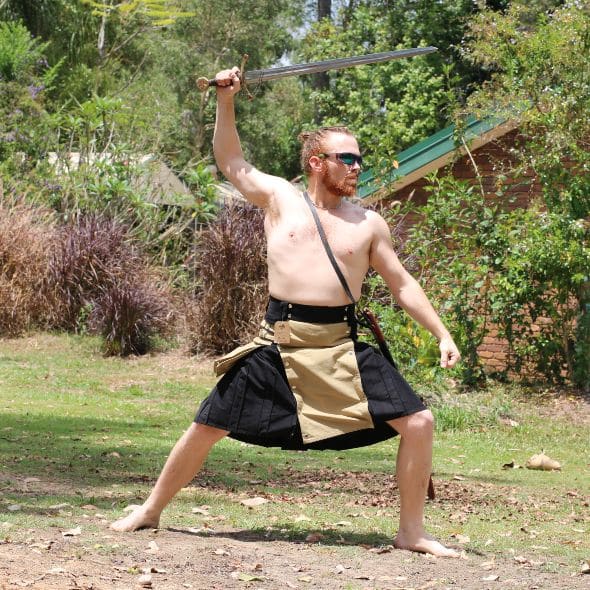Mention kilts, and the words that enter the mind include culture, heritage, Scotland, ancestry, and yes romantic novels and sexy heroes! The kilt has moved on with time, but continues to attract attention (which only seems to be increasing steadily) as a fashion garment.

Origins
The kilt comes from the Scottish Highlands, a region of historic importance in Scotland. The Highlanders used kilts as a daily wear garment. Kilts were a practical convenience for the Highlanders, who relied mostly on their legs or a pony to move from one place to another.
The Highland area featured damp bracken – a type of wild plant having large leaves, prominent in hilly areas. Making one’s way through the damp flora was difficult, as trousers readily absorbed water and became wet. As there was no way for natural drying, people experienced health problems, sometimes even a fatal pneumonia.
The kilt offered a practical solution with its short length. As legs and feet were bare, they dried up quickly.
Full-length kilts are believed to have existed in the 16th century. Knee-length kilts came into being towards the end of the 17th century.
Tartans
Tartan is a woollen fabric used to make traditional kilts, in modern times tartan often comes also in synthetic blends, offering strength, durability and cost savings compared to the traditional woollen fabrics. Tartan also refers to the signature pattern of a kilt.
The pattern consists of multiple lines of varying thickness and colours, all coming together to form multiple squares on the cloth. Each ‘House’ or ‘Clan’ has its own specific combination of colour in order for its wearer to be recognised as representing that ‘House’ or ‘Clan’.
Modern kilts of pure cotton are available, offering more convenience in terms of skin comfort and freedom of movement, and synthetic blends can offer other benefits, however often don’t offer the same breathing or moisture wicking properties.
Rise to Prominence
Kilts grew in status after they were chosen as the preferred garment by Highland regiments of the British Military. It gained further prominence after British aristocracy started preferring the garment for making fashion statements.
Today, kilts are considered a trendy wear. People wear them for weddings. They can also be seen on athletes and audiences at Highland games, and with the advent of Utility Kilts, and Modern Kilts, they are seen more commonly as a fashionable alternative to pants or jeans.
With celebrities across the world slowly starting to endorse the garment at red carpet events, the kilt is fast gaining popularity globally. Recent research also claims that wearing kilts boosts fertility rate in men and produces mental health benefits.
A Kilt is a garment that has travelled long and seen different ages, but still hasn’t lost its charm. At Ozkilts® we offer handmade utility kilts with 100% cotton /cotton blends that are available in different designs and colours.
Sizes are also available depending on whether you wish to wear your kilt on the waist or belly, check our sizing guide for the perfect fit.




